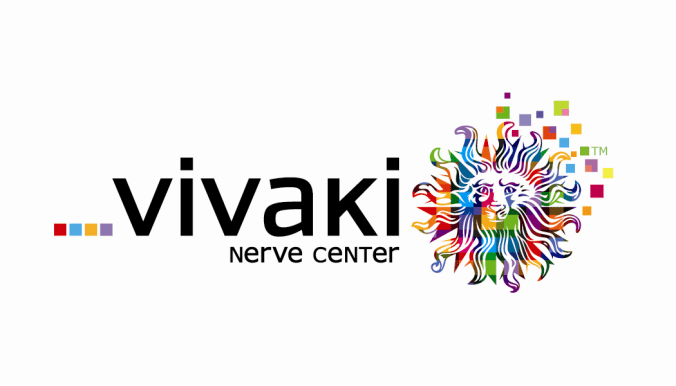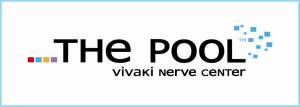End Of Year Review: Marco Bertozzi, Managing Director EMEA at Vivaki, Gives The Agency Perspective On 2010
Posted: December 9th, 2010 | Author: admin | Filed under: Online Advertising | Comments
Exchangewire story here
I first talked about ad exchanges in a pitch in 2008. The DoubleClick ad exchange was either recently launched or due to be. Either way it seemed like the answer everyone in the industry had been looking for: namely, the chance to only buy audience you wanted and move away from buying in the thousands. That principle stands true today and overall the ad exchange trading approach is a successful formula.
The market place has remained pretty static since the late nineties. The industry traded in the same way as every other media channel and it worked quite nicely. When ad exchange trading emerged and became a serious proposition it asked many questions of the roles of agencies, ad networks and brought to life the data practices that had become so prevalent in recent years. 2010 has been an amazing year. The companies and technology on the lips of the media industry now – Invite Media, Turn, BlueKai, DSPs – were not even on the radar here in Europe twelve months ago. It’s incredible how quickly our industry can adapt and I have enjoyed being in thick of it in 2010.
A year in developing an ad exchange proposition
One of the hardest parts of a role such as the development of a new way of trading is gaining trust and buy-in from agency teams. It is actually harder to get traction with a proprietary approach than introducing a third party – see how Group M has struggled with the purchase of 24/7. There has to be proof that something like Audience on Demand can work and beat the competition. Client teams are rightly very defensive of their clients.
In every group you also have of course different agencies with their own approaches and ethos to digital. My challenge with Audience on Demand was to create an offering that worked for each agency and one they felt they could make their own. You have to work with many different opinions but in the case of Vivaki we did that and through that due diligence has come a unified view on how Audience on Demand could look and one of the reasons we have made so much progress. It is great that we have Starcom Mediavest, Zenthoptimedia and Razorfish all involved through consensual means rather than command.
Unique in this arena is the level of attention that needs to be given to data ownership and making sure that we are not buying unsuitable inventory. It’s important that contracts reflect the new world we are living and trading in. Outside of that we need to manage some people’s concerns that ad trading will be the death of the buyer and lead to an automated buying environment. Those concerns are mainly unfounded. Of course as more media is traded in this way it will make agencies more efficient – but take a look at search where we still have teams of people bringing the strategies to life.
The challenges we face in an agency
In considering the challenges we face I have chosen to break up the ad exchange trading proposition into four core areas, people, technology, marketplace and data. Each area has had its own areas of positives and negatives.
People
The challenge with ad trading is that it sits in the display camp. But the execution needs to be with those who are more direct response or search focused – namely those people who enjoy numbers and optimisation. This is not a ‘display’ buy. At the end of the day someone needs to have the skills to make this work and finding those people will be the next battle ground in this market. I fear a repeat of the search market where we competed for talent to the extent that search planners were getting large pay rises after 6 months in the job. We need to avoid a repeat of that by spreading the skill set as much as we can rather than concentrate on a select group of people.
I think there will be a new breed of buyers in this space but they could work across different elements of the same principle – biddable media. Some agencies claim to be employing NASA trained graduates, who could unpick the meaning of life in an instant. I don’t believe this is not a viable strategy for all. Some middle ground is needed here. What skills will be required by agencies? There should be heavy data knowledge, and more analytical than perhaps in the past – but this new breed of buyer shouldn’t be a complete departure. After all, the ad networks have been doing this for years without recruiting from MIT.
Technology
That’s easy! Why do I say it’s easy, well because it is all the same. I can already hear the howls from the baying crowds of technology companies, but fundamentally it’s true. Let’s not hide behind technology. It’s hugely important and exceptionally scientific but unless you have the people to make it work, it’s effectively useless. We work with Invite in the main and they are the leading player in the space now with the backing of Google – and hopefully they will continue to drive innovation. That said we have not won a single piece of business on the back of our technology sell. It’s all about the people and strategy. The most important thing any agency can do is work on the overall integration of the data provided by these systems into the agency’s data warehousing infrastructure. That’s where the value is created not in the individual system itself – and that’s where NASA knowhow comes in!
Ciaran asked me about developments in this space. I think we have been seeing the morphing of companies with a technical core into DSP offerings. That for me is the biggest shift. Real-time-bidding capabilities have also driven this development. As we have seen from results, it really makes a difference to performance and the margins publishers are able to take.
As I mentioned earlier its fascinating watching all the new players come to market. Dataxu, Turn, Mediamath, Appnexus and many others all staking their claims in this space and that battle with continue unabated. On the back of that I hope we will see product improvements to benefit our clients, especially around video and mobile.
Marketplace
Is there inventory or not? There is a lot of exchange inventory that needs to be supplemented with more mainstream inventory, Yahoo already do this. Microsoft has just signed up with Appnexus and there is a ground swell of larger publishers that are starting to hear the whispers that they can make more revenue through exchanges than going to ad networks. Critical mass is key and it is coming fast.
If you were to ask me what has changed in this area I would say that publishers are now considering putting more inventory through exchanges and dipping their toe in the water. Many people talk about the threat to ad networks from agencies – in terms of replicating their model. I am more inclined to believe that publishers are less willing to forsake their remnant and unsold to ad networks, preferring to move inventory into open exchanges.
Scale to compete is another topic of intense debate. Anyone who has run an attribution model on one of their campaigns will see that a number of sites can feature heavily across a number of exposures on a campaign but the last click will often fall to a small list of companies that effectively buy up the web. These networks buy at huge scale and therefore often win the last click battle. That’s not strategy or skill – it is sheer bulk. But it works in our current basic last-click-wins approach to digital. It’s no surprise to find that the ad networks are the largest buyers off the exchanges!
Data
Come back to me next year. There’s been so much talk but little action over the past twelve months. The area of most interest is of course retargeted inventory – first party data rather than third. For the last few years agencies and advertisers have been giving it away to ad networks to make their own campaigns work better. Ad networks were thus able to create greater insights on competing brands. The battle is now on to retrieve that data usage from third parties and keep it between agency and client. One thing that is blatantly clear is the need for a huge shift in data contracts. Client contracts and media owner contracts are going to change as everyone wakes up to the reality of how data is being used.
As for third party data, we are not there yet in Europe. There is little to no decent data on the market. A couple of companies are starting to shape their offerings. Obviously there are those who will sell data but on the back of their media networks. I think we will see some developments in 2011 as US companies come to town but we have some way to go. The greatest challenge is managing the price and value. Up to this point data has been too expensive and has invariably underperformed – so we should see some big improvements next year.
European ad exchange trading
I think that the idea of a group offering across Europe is more than possible, but it remains very complex. I spend much of my time investigating the developments in European markets and trying to understand their individual nuances. Each country has different marketplaces – with some more ready than others. Germany is a particularly entrenched market with some very established publisher relationships and a low use of ad networks. There are big companies in the space such as Weborama, Adjug, Adscale all looking at establishing opportunities. The importance of working with local partners cannot be underestimated if you are to make a success in these different markets – a one-size-fits-all approach will not work.
Conclusions
It’s been a fascinating and exciting year. I have met with some extremely bright companies and people – and I believe that this ad exchange trading tide will change our business more than any other single development. As we move into 2011 – and we see the addition of video and mobile to the automated ad trading mix – the ad exchange space will become even more complete.
As I discussed it will ask questions of many company structures and approaches, people skills and data capabilities but that is the interesting area for me. It will make us all re-evaluate how we work and what our structures and people skill sets should be. I work with great teams in the VivaKi agencies and am fortunate to be able to push on an open door. This innovation requires some elements of trial and error, and we all need to learn together. I would also say we should encourage each other in this space. The more we work together, the better the traction from publishers and data companies, the more we will grow as an industry.


